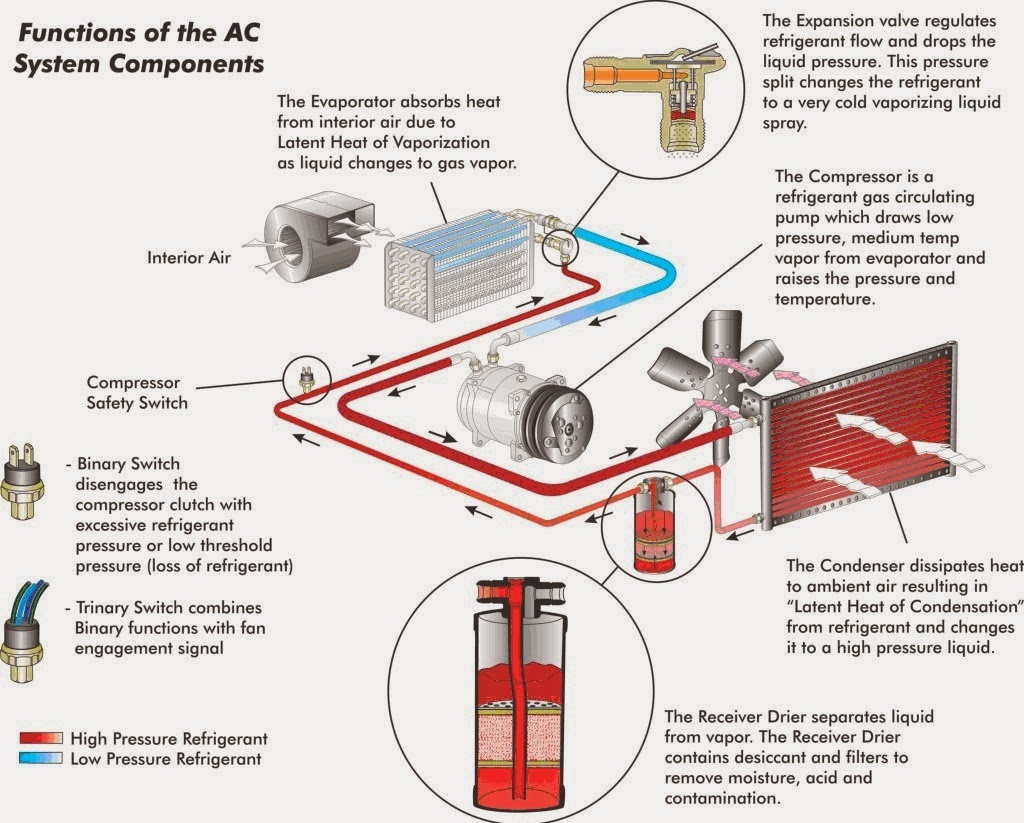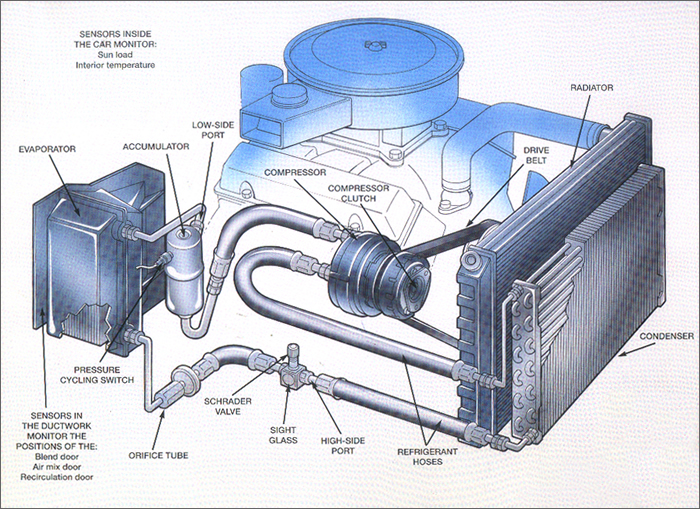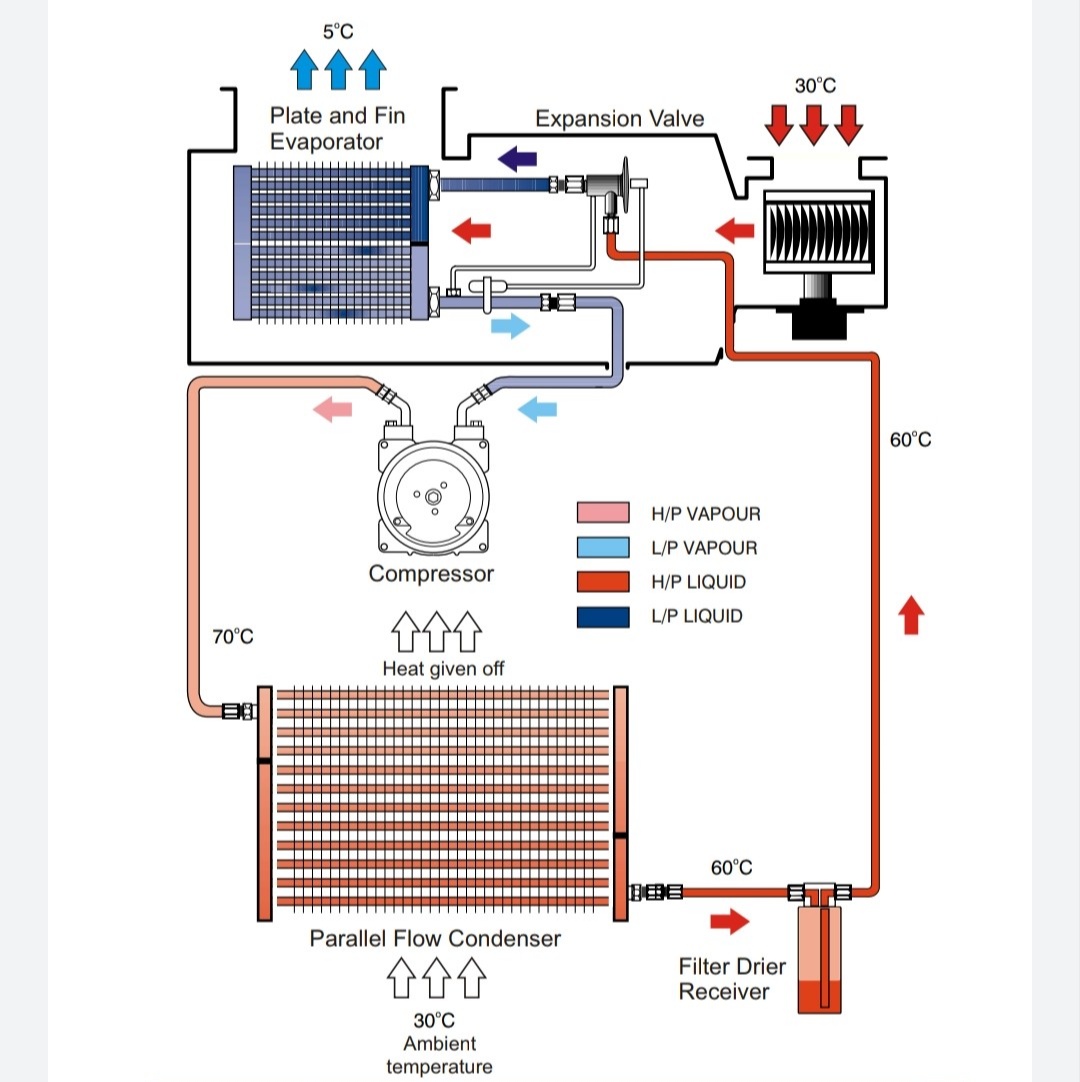Chill Out: Mastering Your Car AC Vacuum Process
Is your car AC blowing hot air instead of the refreshing coolness you crave? A poorly performing AC system can make summer driving a sweaty nightmare. One crucial step in maintaining a frosty car AC is knowing how to properly evacuate the system, a process often referred to as "pulling a vacuum." This involves removing air and moisture, allowing the refrigerant to work efficiently.
Evacuating an automotive AC system is more than just a maintenance step; it's essential for optimal cooling. Think of it like bleeding brakes – it removes unwanted elements that hinder performance. Without a proper vacuum, air and moisture can contaminate the refrigerant, reducing its cooling capacity and potentially damaging system components.
The history of AC system evacuation is intertwined with the development of automotive air conditioning itself. As AC systems became more complex, the need for specialized procedures like evacuation became clear. Early methods might have been less sophisticated, but the core principle remained the same: create a vacuum to remove contaminants. Today, specialized vacuum pumps and gauges make the process more precise and efficient.
Understanding why evacuating your car's AC is important starts with understanding the role of refrigerant. Refrigerant absorbs heat and releases it elsewhere, creating that cool air you love. But when air or moisture is present, the refrigerant can't work efficiently. This leads to warmer air, increased pressure, and potential damage to the compressor, the heart of your AC system.
Several issues can arise from an improperly evacuated AC system. Reduced cooling power is the most obvious, leaving you sweltering on hot days. Moisture can also lead to corrosion within the system, shortening its lifespan. Furthermore, a contaminated system can put extra strain on the compressor, leading to premature failure, a costly repair. Now, let's delve into the process of car AC evacuation.
Evacuating a car AC system involves removing air and moisture using a vacuum pump. This process creates a negative pressure environment within the system, drawing out unwanted elements and preparing it for a fresh refrigerant charge.
Benefits of Evacuating your Car AC System:
1. Improved Cooling Performance: By removing air and moisture, the refrigerant can operate at peak efficiency, resulting in colder air and a more comfortable driving experience. For example, an AC system with air contamination might only cool the air to 60°F, while a properly evacuated system could reach 45°F.
2. Extended System Lifespan: Eliminating moisture prevents corrosion and protects components like the compressor and condenser, extending their lifespan and saving you money on repairs.
3. Reduced Risk of Compressor Failure: A properly evacuated system reduces the strain on the compressor, preventing premature failure and costly replacement.
Step-by-step guide to evacuating a car AC system:
1. Connect the vacuum pump to the AC system's low-pressure service port.
2. Open the low-pressure valve on the manifold gauge set.
3. Turn on the vacuum pump and let it run for the manufacturer-recommended time (usually around 30-45 minutes). Observe the vacuum gauge to ensure a deep vacuum is achieved.
4. Close the low-pressure valve and turn off the vacuum pump.
5. Observe the vacuum gauge for several minutes to ensure the system holds the vacuum, indicating no leaks.
Advantages and Disadvantages of Evacuating your Car AC System
| Advantages | Disadvantages |
|---|---|
| Improved cooling performance | Requires specialized equipment (vacuum pump, manifold gauge set) |
| Extends system lifespan | Can be time-consuming |
| Prevents compressor damage | Requires some technical knowledge |
FAQs:
1. How often should I evacuate my car's AC system? Generally, every time the system is opened for service, such as replacing a component or recharging refrigerant.
2. How long should I vacuum the system? Typically, 30-45 minutes, or as recommended by the vehicle manufacturer.
3. What type of vacuum pump should I use? A two-stage vacuum pump is recommended for automotive AC systems.
4. What is a micron gauge? A micron gauge measures the depth of the vacuum, indicating the level of air and moisture removal.
5. Can I evacuate the system without a manifold gauge set? No, a manifold gauge set is essential for monitoring the vacuum level and ensuring a proper evacuation.
6. What should I do if the system doesn't hold a vacuum? This indicates a leak, which must be located and repaired before proceeding.
7. How do I know when the evacuation is complete? The vacuum gauge should show a deep and stable vacuum, and it should hold the vacuum after the pump is turned off.
8. Is it safe to evacuate my car's AC system myself? While possible, it requires specialized tools and knowledge. If you're unsure, it's best to consult a qualified technician.
Tips and Tricks:
Use high-quality hoses and fittings to prevent leaks during the evacuation process. Always wear safety glasses and gloves when working with automotive AC systems.
In conclusion, evacuating your car's AC system, often called pulling a vacuum, is a critical process for ensuring peak cooling performance, preventing costly repairs, and extending the lifespan of your AC components. While it might seem technical, understanding the importance of this process empowers you to take control of your car's climate control. From combating the summer heat to protecting your investment, a properly evacuated AC system is essential for a comfortable and reliable driving experience. By following the steps outlined above and consulting with qualified professionals when needed, you can keep your car's AC blowing cold for years to come. Don't let a poorly performing AC system ruin your summer drives. Take the time to learn about and implement proper AC evacuation techniques. Your comfort and your wallet will thank you.
Unlocking early math skills preschool counting materials
Finding peace with sherwin williams white the ultimate guide
Unlocking your chevys fit the definitive guide to chevrolet wheel bolt patterns













